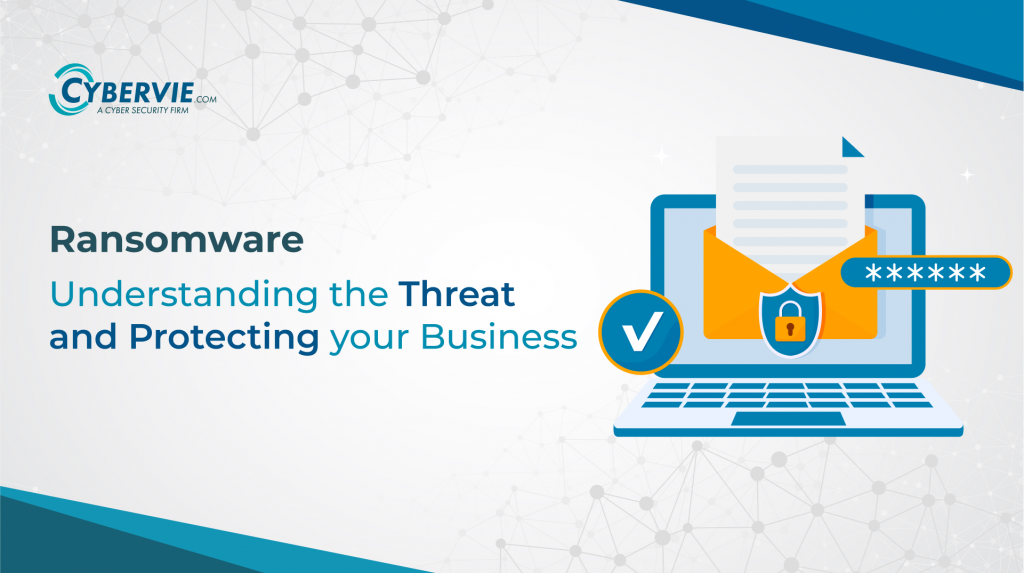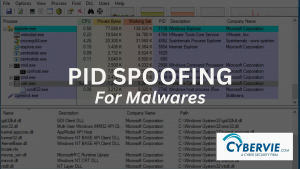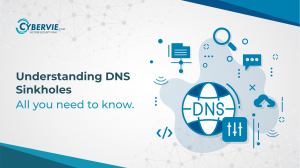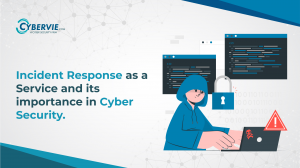Introduction
Definition of ransomware
Ransomware is a type of malware that infects a computer or network and prevents users from accessing their data or systems. The attackers behind it demand payment, often in the form of cryptocurrency, in exchange for providing a decryption key to restore access. In some cases, the attackers threaten to publish sensitive data if the ransom is not paid.
Explanation of how ransomware works
Ransomware cyber crime typically gains access to a system through a phishing email, malvertising, or exploiting vulnerabilities in software or systems. Once it infects a computer or network, it encrypts files and data, rendering them inaccessible to the user. In some cases, ransomware also prevents the user from accessing their computer or network entirely.
Basically it works in three phases, such as
- Infection and Exploitation
- Data Encryption
- Demand for Ransom

The attackers behind ransomware cyber crime then demand payment, often with a deadline, in exchange for a decryption key to restore access. They may also threaten to publish sensitive data or keep the system inaccessible until the ransom is paid. It can cause significant disruptions to businesses, resulting in downtime, lost productivity, and reputational damage.
Brief overview of the growing threat of ransomware to businesses
Ransomware Virus attacks have become a significant threat to businesses in recent years. According to a report by the cybersecurity firm SonicWall, it attacks increased by 62% in 2020, with attackers demanding an average of $312,493 per incident. The healthcare industry has been particularly hard hit, with 96% of healthcare organizations experiencing at least one ransomware attack in the past year.
Ransomware attacks can result in significant financial losses, as well as reputational damage and potential legal liabilities. Additionally, paying the ransom does not guarantee that the attackers will provide the decryption key or not target the system again in the future. As such, it is critical for businesses to implement preventative measures and have a response plan in place in case of a ransomware virus attack.
The Impact of Ransomware on Businesses
Statistics on the increasing number of ransomware cyber attacks
It attacks have been on the rise in recent years, with the number of attacks increasing significantly. According to a report by the cybersecurity firm Sophos, there was a 485% increase in ransomware virus attacks in 2020 compared to the previous year. Another report by the cybersecurity firm SonicWall found that there were 304.7 million attacks in 2020, an increase of 62% from the previous year.
The impact of ransomware cyber attacks on businesses, including financial losses, reputational damage, and potential legal liabilities
Ransomware attacks can have significant impacts on businesses, including financial losses, reputational damage, and potential legal liabilities. The financial losses can include the ransom payment, costs associated with investigating and recovering from the attack, and the loss of business due to downtime and lost productivity. In addition to the financial impact, businesses may also suffer reputational damage if the attack becomes public knowledge.
Moreover, if the attackers gain access to sensitive data during the attack, businesses may also be exposed to potential legal liabilities, including fines and lawsuits.
Examples of high-profile ransomware attacks and their consequences
Several high-profile ransomware attacks have occurred in recent years, with significant consequences for the affected businesses. For example, in May 2021, the Colonial Pipeline, which supplies fuel to much of the eastern United States, was hit by a attack. The attack resulted in the shutdown of the pipeline for several days, causing fuel shortages and price increases in several states. The company paid a ransom of $4.4 million to the attackers to regain control of its systems.
Another example is the ransomware attack on the healthcare provider Fresenius in 2020. The attack disrupted the company’s operations, causing delays in patient care and resulting in financial losses. The attackers also accessed patient data during the attack, potentially exposing the company to legal liabilities.
These examples highlight the significant impact that ransomware attacks can have on businesses, underscoring the importance of taking preventative measures and having a response plan in place in case of an attack.
The Different Types of Ransomware (Ransomware Examples)
Encryption ransomware: It is the most common ransomware example type of ransomware viruses. It works by encrypting the victim’s files and then demanding payment in exchange for the decryption key. Once the files are encrypted, they become inaccessible to the victim, rendering their system unusable. The attackers typically demand payment in cryptocurrency to avoid detection.
Locker ransomware: It is a type of ransomware example that locks the victim out of their system by changing the login credentials, such as the password or PIN. The attackers then demand payment in exchange for the correct credentials to regain access to the system. Locker ransomware is typically less common than encryption ransomware, as it requires more technical skill to execute.
Master boot record (MBR) ransomware: Master Boot Record (MBR) ransomware infects the computer’s boot sector, which is responsible for loading the operating system. Once infected, the it displays a message demanding payment in exchange for restoring access to the system. MBR ransomware example is typically more difficult to remove than other types of ransomware, as it infects the boot sector, making it harder to detect and remove.
Mobile device ransomware: It is a type of ransomware example that targets mobile devices, such as smartphones and tablets. The attackers typically trick the victim into downloading a malicious app, which then encrypts the device’s files or locks the victim out of their device. The attackers then demand payment in exchange for the decryption key or to regain access to the device.
These are the four main types of ransomware that businesses and individuals should be aware of. Understanding how each type of ransomware works can help organizations develop more effective strategies for preventing and responding to ransomware attacks.
Common Attack Vectors for Ransomware Viruses
Phishing emails: Phishing emails are fraudulent messages that appear to be from a reputable source, such as a bank, social media site, or online retailer. The email often contains a link to a fake website, which then prompts the victim to enter their login credentials or other sensitive information. Cybercriminals use phishing emails to trick individuals into unwittingly installing malware on their systems.
Exploiting vulnerabilities in software and systems: Cybercriminals often exploit known vulnerabilities in software and systems to deliver malware. These vulnerabilities are typically weaknesses in the coding or design of the software or system that can be exploited to gain unauthorized access or perform other malicious actions. Attackers may use exploit kits, which are pre-packaged software programs designed to automate the process of identifying and exploiting vulnerabilities.
Malvertising: Malvertising, or malicious advertising, refers to the use of online advertising to spread malware. Cybercriminals use malvertising to deliver malware to a wide audience by placing malicious ads on legitimate websites. The ads may redirect victims to a fake website, where they are prompted to download malware onto their systems.
Social engineering: Social engineering refers to the use of psychological manipulation to trick individuals into divulging sensitive information or performing actions that benefit the attacker. Cybercriminals use social engineering tactics to bypass security controls and deliver malware. Examples of social engineering tactics include pretexting, baiting, and phishing, all of which rely on the victim’s trust or curiosity to lure them into divulging sensitive information or installing malware.
How to prevent Ransomware Cyber Attacks?
Employee training and awareness
Employee training and awareness are crucial for preventing malware infections. By training employees on how to identify phishing emails, avoid suspicious websites, and use strong passwords, businesses can reduce the risk of employees unwittingly installing malware on their systems.
Keeping software and systems up-to-date
Keeping software and systems up-to-date is essential for preventing malware infections. Cybercriminals often exploit known vulnerabilities in outdated software and systems, so businesses should regularly update their software and systems with the latest patches and security updates.
Implementing multi-factor authentication
Multi-factor authentication is an effective way to prevent unauthorized access to systems and data. By requiring users to provide two or more forms of authentication, such as a password and a fingerprint or a code sent to their mobile phone, businesses can reduce the risk of a cybercriminal gaining access to sensitive information.
Backing up data regularly
Backing up data regularly is essential for protecting against malware attacks. If a business’s data is compromised by malware, having a backup can help to quickly restore the data and minimize the impact of the attack.
Deploying anti-virus and anti-malware software
Deploying anti-virus and anti-malware software is a fundamental step in protecting against malware. Anti-virus and anti-malware software can detect and remove known malware infections and prevent new malware from infecting systems. It’s important to keep the software up-to-date and to regularly scan systems for malware.
What to Do if Your Business is Attacked by Ransomware Virus?
Steps to take immediately after discovering a ransomware attack
Upon discovering a ransomware attack, it’s important to act quickly to minimize the damage. The first step is to isolate the infected machine from the network to prevent the ransomware from spreading to other systems. Next, the affected machine should be shut down to prevent further encryption of data. Once the machine is offline, IT personnel should assess the extent of the damage and determine the type of ransomware involved.
Deciding whether to pay the ransom or not
The decision to pay the ransom is a difficult one and should be made after considering all options. Paying the ransom may be the quickest way to regain access to data, but it also encourages further ransomware attacks and does not guarantee that the data will be restored. Moreover, paying the ransom may violate laws and regulations in certain jurisdictions. Before deciding whether to pay the ransom or not, businesses should consult with their legal and IT teams.
Restoring data from backups
Restoring data from backups is the safest and most reliable way to recover from a ransomware attack. If a business has been regularly backing up data, it can restore the most recent backup to a clean machine and resume normal operations. It’s important to ensure that the backup is clean and free from malware before restoring it. If backups are not available, data recovery services may be an option, although they can be expensive and time-consuming.
Reporting the attack to law enforcement and regulatory authorities
Reporting the attack to law enforcement and regulatory authorities can help to prevent further attacks and provide valuable intelligence to authorities. Depending on the jurisdiction and the nature of the attack, reporting may be mandatory. In the United States, for example, the FBI’s Internet Crime Complaint Center (IC3) is the central reporting agency for cybercrime. Other regulatory authorities, such as the Health Insurance Portability and Accountability Act (HIPAA) in the healthcare industry, may also have reporting requirements.
Looking for ways to protect your business or personal information from cyber threats? Look no further than our comprehensive cyber security services. Our team of experts can provide you with customized solutions to help keep your information safe and secure. Contact us for more.








